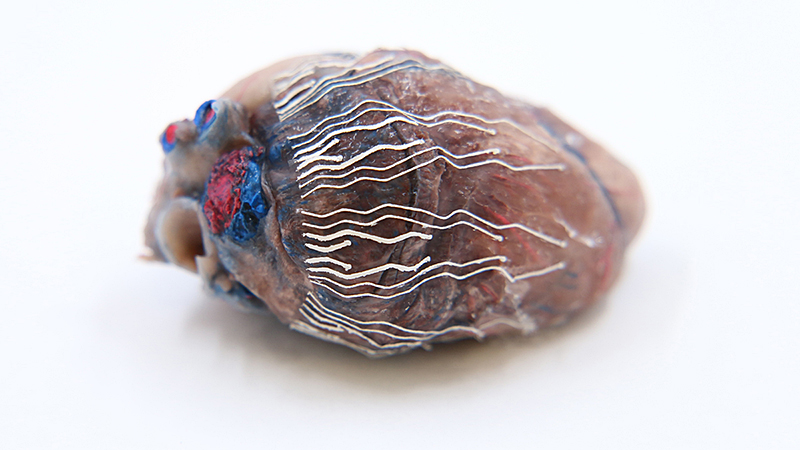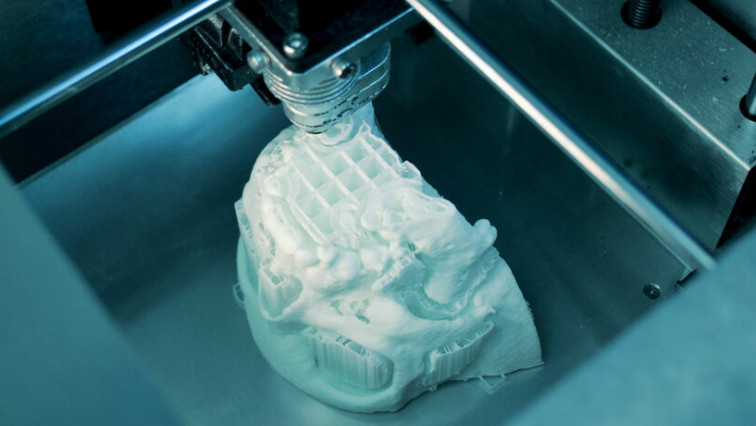Chi Hwan Lee created the biosensor, which allows for simultaneous recording and imaging of tissues and organs during a surgical operation. Lee is the Leslie A. Geddes Assistant Professor of Biomedical Engineering in the Purdue's Weldon School of Biomedical Engineering (BME) and assistant professor of mechanical engineering. Lee also has a courtesy appointment in materials engineering.
"Simultaneous recording and imaging could be useful during heart surgery in localizing critical regions and guiding surgical interventions such as a procedure for restoring normal heart rhythms," Lee said.
Traditional methods to simultaneously record and image tissues and organs have proven difficult because other sensors used for recording typically interrupt the imaging process.
"To this end, we have developed an ultra-soft, thin and stretchable biosensor that is capable of seamlessly interfacing with the curvilinear surface of organs; for example the heart, even under large mechanical deformations, for example cardiac cycles," Lee said. "This unique feature enables the simultaneous recording and imaging, which allows us to accurately indicate the origin of disease conditions: in this example, real-time observations on the propagation of myocardial infarction in 3D."

A fully printable biosensor made of soft bio-inks interfaces with a pig heart. Research about the biosensor, developed by researchers at Purdue University and Los Alamos National Laboratory, has been published in Nature Communications.
By using soft bio-inks during the rapid prototyping of a custom-fit design, biosensors fit a variety of sizes and shapes of an organ. The bio-inks are softer than tissue, stretch without experiencing sensor degradation and have reliable natural adhesion to the wet surface of organs without needing additional adhesives. Kwan-Soo Lee's research group in Los Alamos National Laboratory is responsible for the formulation and synthesis of the bio-inks.
A number of prototype biosensors using different shapes, sizes and configurations have been produced. Craig Goergen, the Leslie A. Geddes Associate Professor of Biomedical Engineering in Purdue's Weldon School of Biomedical Engineering, and his laboratory group have tested the prototypes in mice and pigs in vivo.
"Professor Goergen and his team were successfully able to identify the exact location of myocardial infarctions over time using the prototype biosensors," Lee said. "In addition to these tests, they also evaluated the biocompatibility and anti-biofouling properties of the biosensors, as well as the effects of the biosensors on cardiac function. They have shown no significant adverse effects."
Research about the biosensor has been published in the peer-reviewed Nature Communications.
The Purdue Research Foundation Office of Technology Commercialization has filed a patent application on Lee's biosensor. For licensing information, please contact Dipak Narula of OTC and reference track code 2021-LEE-69211. Other steps taken to develop the sensor include exploring further applications of the bio-inks into various printable biosensors with a tailored design to fit other organs such as the stomach, which requires even higher stretchability than the heart.
Read the original article on Purdue University.







